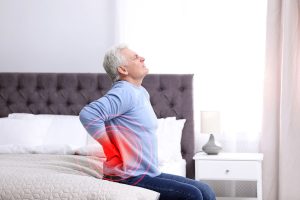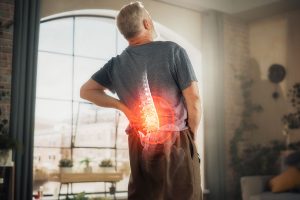The prevalence of pain in the thoracic spine section is hard to define. While one research says only 4% of people have it, the other says that up to 72% of the surveyed suffer from this syndrome. Nonetheless, best not to ignore it and treat it properly if you ever experience it.
The Functions and the Anatomy of Thoracic Spine
The Role in the Body
The thoracic spine is the spinal region located at the back of the chest (thorax, hence, the name). It carries many important functions, including:
- Provides protection for the spinal nerves and the cord.
- Servers as a rib cage anchor.
- Gives support for your chest and abdomen. Together with the rib cage, it shields the heart and lungs while being movable enough to allow you to breathe freely.
- Makes it possible for you to move. Thanks to the agile vertebrae joint system, you can bend and turn and, in the meantime, keep support provided by your spine.
The Constitution
The thoracic spine links to the cervical spine (neck) above and the lower back section, aka the lumbar spine, below. It has the greatest rotation range in your entire body, but the least extension range. The main parts of it are:
- Twelve vertebrae (small bones with the numbering from T1 to T12) with facet joints for connection and agility.
- Intervertebral disks are flat and elastic rings with a soft gelly center. Their main function is cushioning — thus, you may jump and fall with less risk of trauma.
- The innervation that carries signals between your brain and body.
- Musculary tissues and ligaments— the soft tissues that support your bones and hold them as they should be.
How Does the Spinal Pain Occur
The common causes of thoracic spine pain are:
- Strains and sprains caused by sport and vehicle accidents;
- Slouching while sitting or standing for an extended period of time (e.g. while waiting or working);
- Unfit muscular corset that does not provide enough support for the spine;
- Overuse injuries from repetitive movements that involve the chest part of the body.
The usual pain symptoms are:
- A sudden and sharp sensation concentrated in one point of the spine;
- A throbbing unpleasant feeling involving a large area of your back;
- Feeling stiffed and unable to move normally;
- Muscle spasms while moving, resting, or both;
- Numbness or weakness in the limbs.
To the list of more rare and serious origins of back pain is included:
- Degenerative disorders, such as osteoporosis, spondylosis, or osteoarthritis;
- Tumours;
- Infections;
- Compression fractures;
- Shingles;
- Scheuermann’s disease.
The pain may be caused not only by the spine itself but also the problems with closely-located organs. Even the pain from a minor heart attack can feel irradiated to the back area. Also, if it follows a recent injury, starts at the age of less than 20 or more than 50, gets worse over time, or is accompanied by other symptoms, such as fever, it is recommended to consult your family doctor or another healthcare professional.
Treatment
If the pain came after some everyday or excessive activity, like conducting a repair, spending much time playing team sports, or overdoing it in the gym, it will likely pass after some rest. You can use some over-the-counter anti-inflammatory medications, such as Tylenol or ibuprofen, to reduce the pain and accelerate the healing. In the case of it being a chronic problem, a doctor may prescribe you a course of physical therapy to prevent future recurrences and muscle relaxants to reduce spasms. In more complex cases, such as severe traumas or tumors, a surgical solution may be required.




